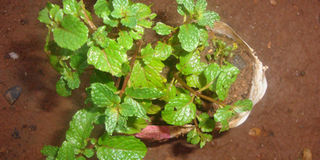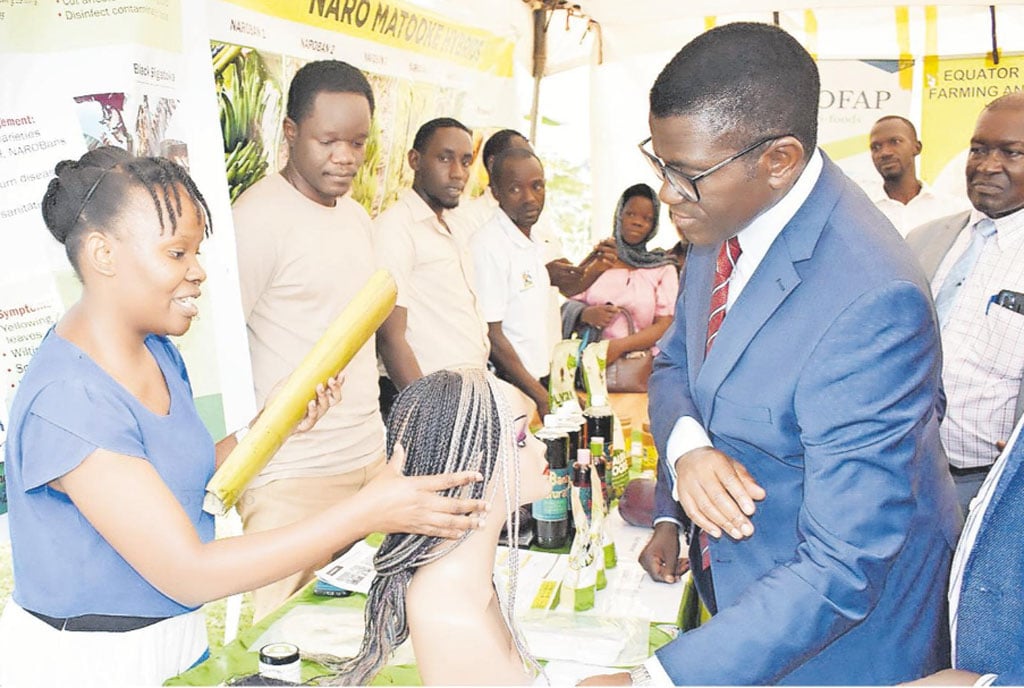Prime
Fresh lemon mint for your tea

Lemon mint can grow only in sandy soil. Photo by Constance Bbonyo
What you need to know:
Monarda citriodora is a species of flowering plant in the mint family, Lamiaceae, that is native much of America but can also grow well in tropical climates like Uganda’s.
A dash of lemon mint can make all the difference to a cup of tea. Lemon mint (Monardia Citriodora) plant has broad, light green feathery leaves. As its name suggests, its leaves emit a smell similar to that of lemons. The smell is also sometimes described as similar to that of Oregano. Its flavour is a combination of lemon and mint.
It is used by Native Americans for medicinal and culinary purposes. It is a spice and gives tea a lovely lemon scented flavour. The leaves can also be minced and added to fruit jellies. Its flowers can be white, purple or pink, depending on the sub-type. It grows quickly and can grow as high as three feet. Because the flowers look lovely, it can also be grown as an ornamental plant.
In the garden, plant them 12 to 24 inches apart. Mr Joseph Kaka, proprietor of Ngolobe Flower Plants along Mukwano Access Road says, “You can plant it any time, whether it is dry or rainy. It will be healthy. When it is potted, it does not need much water. Make sure the pot is well drained. It must have holes in the bottom to drain water.”
He maintains that clay is better than plastic for pot material, because it keeps the plant moist longer.
“You have to mix different types of soil – black soil, sand soil and a bit of clay. Should you fail to get all the types of soil, it can grow in only sandy soil.”
The maturity of the plant depends on the care it is given. If it is water-logged, the life-span will shorten. “If they stand in water for say, a month, they will rot,” says Mr. Kaka. With the right amount of moisture, it will thrive for a year, then you will need to re-pot. Mr. Kaka says if you do not, it will change colour and you will get less nutrients from it. You need to re-pot it annually.
Although it is not a perennial plant, it can thrive for years if well maintained. To plant it, you can sow seeds directly on bare ground. It would be better if you had a big garden where you can leave the plants undisturbed. They will re-seed when theybecome mature.
However, the time it takes to mature may be too daunting. That is why many people opt to harvest the flowers for spices and pull up the plants to free up planting space.
Otherwise, you can plant it using cuttings. Plant the cuttings in good soil and they will root. You do not need any fertilizer. Seedlings at Ngolobe Flower Plants are Shs2,000. A clay pot suitable for planting lemon mint is Shs5,000. You can position the plant in any place with enough light. Balconies, verandahs and backyards are ideal. Mr. Kaka says the morning sunlight that is not so sharp is particularly good.
Both its leaves and flowers can be used to make potpourri (dried herbs and flowers used to scent rooms).
For culinary purposes, it is used as a garnish in salads, teas, wines and liqueurs. It gives a lovely flavour to meat dishes like chicken. It is an ingredient in many dessert recipes and is used for flavouring cakes, and sauces. It is also used in herbal teas.
For its medicinal uses, teas made from the leaves can treat colds, coughs, fevers and respiratory problems.
As an insect repellent, the essential oil from lemon mint contains Citronellol. This is an insect repellent. It has also been used to deter fleas and mites.
Harvest the leaves from time to time whenever you need to use them. For preservation, harvest at peak maturity. For distillation, you need to harvest when flowers are just beginning to appear. At that point, the leaves contain the highest level of essential oils.
You can dry the leaves the usual way by hanging small bunches from a ceiling in a dry, dark location, with good ventilation. It usually takes one to two weeks to dry. From its aromatic and ornamental value to its numerous uses, consider the lemon mint plant for your vegetable garden.




